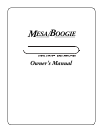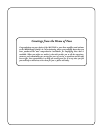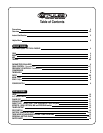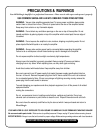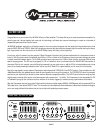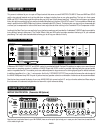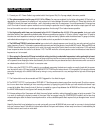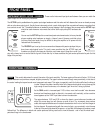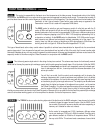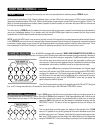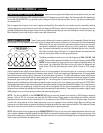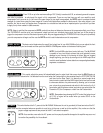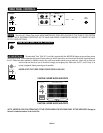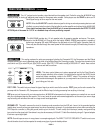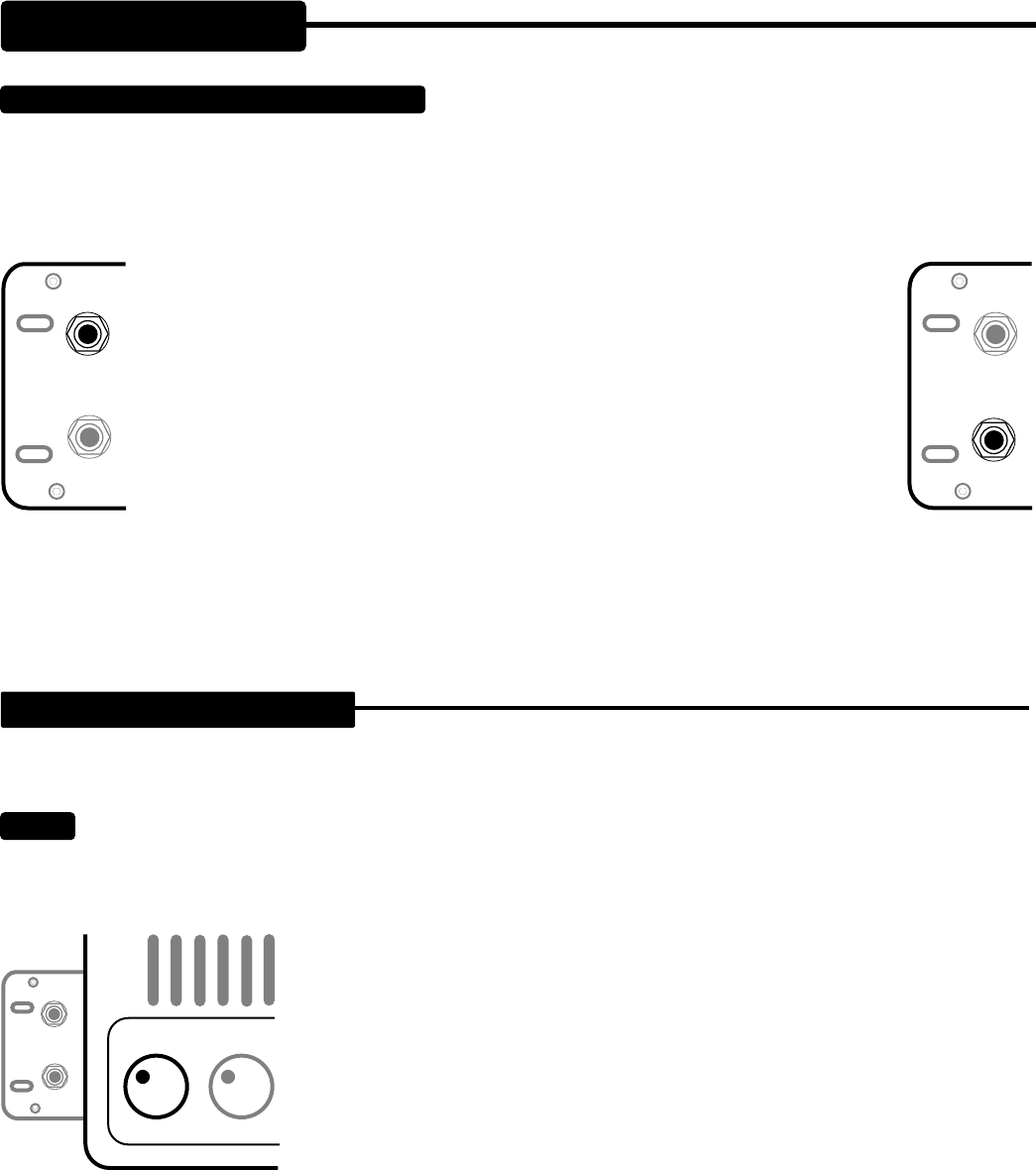
FRONT PANEL:
INSTRUMENT INPUTS: ACTIVE / PASSIVE
These are the Instrument Input jacks and between them you can match the
signal output level of virtually any instrument.
The ACTIVE Input is padded down for greater input stage headroom and this works well with basses that use an on-board pre-amp
with an active tone control circuit. Usually these instruments put out a much hotter signal than conventional basses, even when their
tone controls are set “flat”. The added headroom is needed to prevent clipping in the first stage of the pre-amp and the ACTIVE Input
should be used whenever instruments that utilize active style pickup/EQ harnesses are
used.
You can use the ACTIVE Input for conventional passive instruments also, for heavy handed
players needing extra headroom or simply a “cleaner” sound. However, note that unless
you have Kong size hands it may be difficult to bring the amplifier to full power with this
reduced front end sensitivity.
The PASSIVE Input is set up for more conventional basses with passive pickups that pro-
duce lower output signal levels. This jack is more sensitive than the ACTIVE Input and
therefore can drive the first stage to clip with a much lower signal. Keep this in mind if you
play with a heavy touch or want a little bit of growl or front end clip. In those scenarios this jack can be quite useful to push the first
stage of the pre-amp.
FRONT PANEL CONTROLS:
GAIN:
This control determines the overall character of the input sensitivity. The lower regions of the control (below 12:00) lend
greater headroom and provide a scooped, brighter personality. The upper harmonics come through more prominently in this area of
the control making the top end sound more transparent and sweet. This region is especially useful for funkier stuff when thumbing is
in order. It keeps the rubber- band feel intact in the lows and mids while voicing the snap just
high enough to avoid harshness, or the dreaded “gak” when the G string is plucked.
As the GAIN control is increased past 12:00 a richer, more “well-rounded” voice becomes
dominant and headroom starts to diminish in increments until eventually, a tube overdrive
sound appears as the 12AX7 input tube is driven into saturation.
The region between 12:00 and 2:30 is where the classic, warm tube sound resides and
within this narrow band you will discover a world of tone. Tiny increments here produce
subtle, but important differences in the attack characteristic which in turn, feel like changes in
the time domain. By experimenting with the amount of gain, you can actually voice the amp
to feel as if it bounces just ahead of the groove - or lays back a little deeper to produce a more
Fatback feel. The difference in attack and sustain produces striking results as to how the bassist - and in fact the whole band -
perceives things in the time domain.
PAGE 4
INSTRUMENT
INPUTS
PASSIVE
ACTIVE
INSTRUMENT
INPUTS
PASSIVE
ACTIVE
INSTRUMENT
INPUTS
PASSIVE
ACTIVE
GAIN BASS
FOUR - STAGE VACUMM



